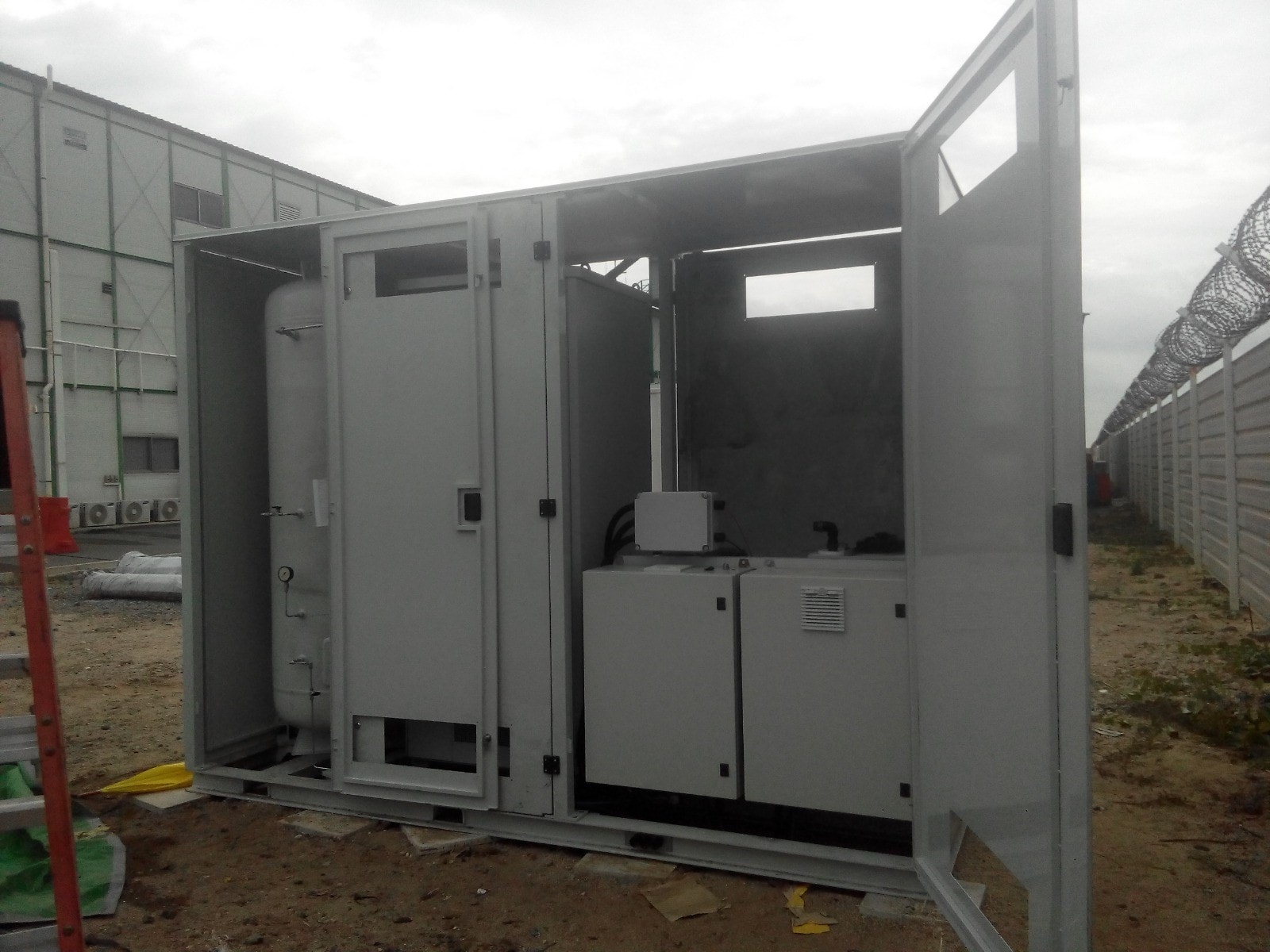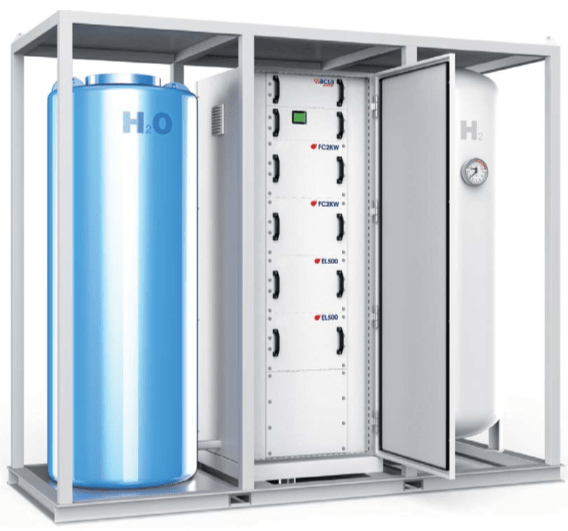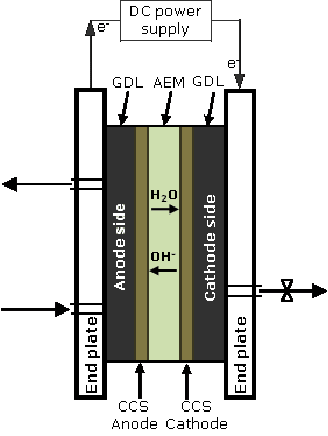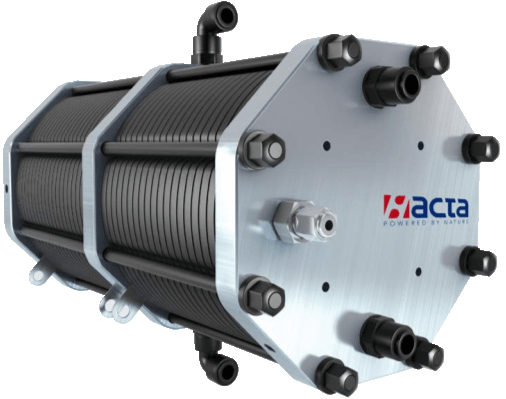
Fuel cell systems have long been considered suitable for remote stationary power applications, which suffer from a high cost of downtime, such as mobile base stations. Fuel cell design and manufacturing improvements, combined with increased volumes being produced, have seen costs decline whilst technical performance, reliability and longevity has improved. This has seen the technology transition over the last five years from field trials at base stations to commercial deployments and is particular prevalent in countries which already have good infrastructure, since this is a prerequisite for hydrogen distribution and delivery.
However the markets and countries experiencing the largest growth in base station deployments are in emerging markets where hydrogen availability and poor road infrastructure makes hydrogen delivery difficult or costly. This combined with an overloaded existing electrical grid and unpredictable outages makes a compelling case for hydrogen production on site or ‘self-recharging’ fuel cells.
There are various types of fuel cells, which are suited to different applications, including powering portable devices, vehicles, domestic energy requirements and small power stations. The suitability of a fuel cell type to a particular application depends on cost and technical performance. The most common and versatile type of fuel cell is the Proton Exchange Membrane Fuel Cell (PEM-FC). This type had been in operation since NASA started the Apollo moon program and PEM Fuel Cells have been used in telecoms applications for more than 10 years now, although other types may come into use in the future.
How are fuel cells used in telecoms?
Fuel cells are used in the role often played by diesel generators or batteries: to provide backup for an unreliable power grid, or in a growing number of installations, as the sole power source when used in conjunction with renewables. In the past when fuel cells have been deployed, they were displacing diesel generators rather than ‘battery only’ sites. However, fuel cells are migrating into the ‘battery only’ space due to existing battery limitations such as life span, particularly in hot climates, and their attraction for theft. Fuel Cells are also considered in off grid / renewable installations, where higher power and longer autonomy is needed and where excess renewable power can be used, once the batteries have been charged, to generate hydrogen rather than let it be wasted, as has traditionally been the case.
Fuel cell systems may rely upon refueling or may be rechargeable depending upon the system type. Fuel cells are most cost competitive at telecom sites with electrical loads between 2-10kW as these are the sites where diesel generators are least efficient.
Advantages of fuel cells
Although fuel cell systems vary, in general they have the following advantages over traditional solutions:

Barriers to fuel cell deployment
As a relatively new evolving technology, the perception of risk and lack of user experience were obstacles to adoption in the past. However, their adoption is now more driven by cost saving issues such as rising diesel fuel prices and this is seen especially in developing countries which are contemplating reducing or removing fuel subsidies. Associated with fuel costs, current OpEx expenses for base stations in many regions represent almost 60% of total costs, which is motivating operators to adopt hydrogen based power systems. This is most prevalent in parts of Asia and the Middle East.
The main obstacle limiting further adoption however is the means of fuel supply. Transporting hydrogen can be expensive, especially where fuel supply chains are not set up. To decrease this obstacle, the fuel cell industry is now focusing its efforts in three areas:
- Improving hydrogen supply logistics. Companies such as Air Liquide, or Diverse Energy in partnership with Linde Gas, are working to provide an integrated solution to enhance efficiencies in the supply chain. However they are very limited in particular geographical areas.
- Designing systems to use fuels other than hydrogen that may have more efficient supply chains (for example Methanol).
- Using rechargeable fuel cell systems, such as those combining fuel cells with electrolisers.
Hydrogen supply Logistics
Hydrogen bottles are typically transported full and then returned to a distribution center for refilling. One approach is the bulk supply model adopted by ReliOn in the USA, where bottles are refilled at the site rather than transported full and returned. Another is the delivery of large bundles of hydrogen bottles adopted by Air Liquide in France. In 2011, Air Liquide’s fuel cell systems powered more than 40 off- grid telecom sites in France with hydrogen bottles supplied via the existing Air Liquide supply chain. In locations where hydrogen is a by-product of industrial process or fossil fuel industries, it may be inexpensively sourced. However, hydrogen is expensive to transport and handle due to low energy density by volume. As a result, costs have a strong geographical dependency.
- An emerging technology to be implemented in parts of Asia and Africa is to use a Methanol Reformer, which produces hydrogen on site directly by using a methanol+water mix and reforming this fuel to make hydrogen. Reformers however can’t produce green power because they are polluting by producing both CO2 and NOX. Reformers need continuous electrical power to be kept hot to reach a 300°C working temperature and the sometimes complex start stop processes do not tend to work well in grid conditions that experience repeated outages lasting several minutes. The disadvantage of reforming summarized by potential users considering a reformer solution is:
- Methanol is toxic for humans; it is not classified as a fuel but as a chemical product following specific norms and regulations, which are country specific. Methanol in some cases is expensive at an average cost of 1.5 USD per litre and difficult to find (potential provider lock- in).
- In terms of efficiency, a reformer-based product is equally or less efficient than a diesel generator: a reformer needs 1.1 litre/kWh while a diesel GenSet driven at 10% efficiency needs 1.0 litre/kWh.
- But above all reformer based fuel cell products do not solve the logistic issue of having to transport a fuel to the site. Methanol is still another fuel in a tank that has to be refilled: In other words fuel has to still be transported to site.
In conclusion reforming potentially still presents similar logistical issues also associated with refilling the tank of the diesel GenSet. They have similar efficiencies, and similar costs associated with the logistical burden of transporting a fuel to remote sites.
Hydrogen generation by electrolysis (“self rechargeable” fuel cells)
The ability to produce hydrogen on site thus taking advantage of the higher efficiencies, autonomy and reliability offered by Fuel Cells and while at the same removing fuel distribution costs completely, is the ‘holy grail’ for fuel cell adoption by Telecom operators. This is particularly relevant for countries experiencing growth in remote areas, which are serviced by unreliable grid conditions or poor infrastructure in general.
To address this need, Acta SpA has designed and developed a revolutionary product called Acta Power, which is in effect a Self-Recharging Fuel Cell power system. The heart of the system is the electrolyser technology based on a Alkaline Solid Polymeric Membrane that makes hydrogen production possible at a lower cost and more efficient energy levels, which was not possible before.

Acta Power integrates a Fuel Cell with an advanced hydrogen generator, which re-generates the hydrogen reserve on site, by using only electricity from the grid (or from renewable sources) and water. In this way the need to replace empty cylinders with full ones is completely eliminated.
The principal behind an Electrolyser-based fuel cell is the use of excess energy from another power source, such as an unreliable grid or renewable source, to electrolyse water to produce hydrogen, which is then stored until it is required.

There are basically three working modes:
- Power production: when there is a power outage, Acta Power generates power converting the stored hydrogen into power needed to meet the load and as a by product also producing water;
- Hydrogen production: when the grid is available, Acta Power generates and stores hydrogen converting the electricity from the grid and using the water (this can be rain or tap water)
- Stand by: when the grid is available and the hydrogen storage is full, the equipment simply stands by.
Hydrogen production from water electrolysis has been available since 1800 but it has historically been considered to be expensive and energy inefficient and typically involved using an Alkaline or PEM Electrolyser approach. These systems provide a challenge for adoption for Telecoms use, as they require a large amount of power to start the hydrogen process and require complex balance of plant to clean or dry the hydrogen. In addition, the hydrogen pressure output from these technologies is generally at a low pressure, which requires some form of mechanical compression to store useful quantities, which is an additional energy requirement and potential liability in terms of failure.
In addition, both Alkaline and PEM Electrolysers are not normally suited for remote deployments where reliability under generally extreme weather conditions is the norm and remote site visits must be reduced to a minimum. To further reduce the need for site visits Acta also have implemented a comprehensive remote management and control system that reduces the need for maintenance visits to potentially once a year, in addition to providing a window to real power conditions on site.

Acta’s AES water electrolyser stack technology solves both cost and energy efficiency issues typically seen with existing electrolyser systems. The use of an Alkaline Solid Polymeric Membrane eliminates the need to use expensive and rare noble metals on the electrodes and enables the safe production of directly compressed hydrogen without recourse to post compressors or sophisticated pressure balancing systems, which add to the cost. The system is intrinsically simple, also saving the power required for the ancillary devices and for the compressor typically required for Alkaline or PEM based systems.
Acta’s AES stack technology combines the benefits of a liquid alkaline electroliser with those of a PEM membrane electroliser. As in the alkaline system there is no need to use noble and rare metals at the electrodes, reducing costs and making the technology feasible on a giga-watt scale for global commercialization. But as in the PEM system, the hydrogen can safely be produced compressed beyond 30 bars with no need of caustic electrolyte, powered directly by intermittent renewable energy.

Acta’s alkaline solid polymeric membrane creates a physical barrier between hydrogen and oxygen such that they can never mix in an explosive ratio, unlike alkaline electrolysers where gases will blend across the porous separator when current fluctuates, making them unsuitable for powering directly from intermittent renewable energy. While existing electrolyser technology is generally limited to 15 Bar hydrogen pressure, the Acta AES stack can support hydrogen production and rates of over 30 Bar and can adjust production rates, in real time, to match the variable and constantly changing power output typically supplied by renewables.

The AES stack can be directly connected to an off-grid variable power source, such as solar panels or a wind generator, to produce a truly clean hydrogen fuel. The Acta alkaline membrane, unlike the PEM membrane repels most metal ions and can be supplied with filtered rainwater for completely service-free off-grid autonomous operation.
The Business Case
Most Telecom Operators considering any technology will make comparisons between the total cost of ownership (TCO) of the new technology and what they currently spend. In only a few cases does the element of a “green power” policy have a consideration and in all cases the introduction of any new technology must provide a better service level and at the same time a lower TCO value. The more savings that can be achieved without compromising, or better still, while improving the service level, the more compelling is the proposition. The considerations for the deployment of an Acta Power system include:
- Produce hydrogen on site and store this for use in power outages.
- Backup time depends on the size of the storage tanks and the ratio of charging time to supply time.
- Autonomy can be increased by adding additional low pressure vessels
- Similar CAPEX to existing technology but reduced additional equipment and less complex operation.
- Logistics costs drastically reduced, as maintenance is minimal and no refueling required.
- Can be used in conjunction with grid or renewables, which may make some remote locations commercially viable.
Typical TCO analysis includes comparing an Acta Power to the existing capital and operating costs of all relevant site equipment including generators, batteries, and cooling equipment, as well as an evaluation of the total site energy requirement, including BTS, air conditioning, and lighting. In this way, the costs and benefits of fuel cell solution can be compared to traditional approaches (large batteries, diesel generators, cycle charging, etc.) for various operational scenarios. The output from a typical TCO for the Southeast Asia region is shown; note that this TCO does not include factoring in fuel theft, which can run as high as 50% in some cases, or battery theft, which is typically recorded as 10%-18% particularly in remote locations.

The site in question has a power requirement of 4kW and currently experiences grid outages of 120 hours a month ranging from many interruptions lasting a few minutes with outages of up to 8 hours in some cases. During certain times of the year the local utility also imposes enforced outages of up to 4-6 hours during periods when regional consumption of electricity stresses the grid.
On the TCO analysis the costs of implementing an ACTA Power system compared to using existing technology had a similar CAPEX cost however the act of producing fuel on site versus consuming diesel resulted in the new approach providing a much lower operational cost with a total cost saving of over 31,000 USD in 5 years.
Conclusion
The opportunity for Fuel Cell deployment is well understood in the Telecommunications sector, with such benefits as lower weight and space occupancy, lower maintenance needs, reduced fuel logistics together with the environmental cleanness of Fuel Cells demonstrating their advantage over legacy technologies such as batteries and diesel generators.
In countries or situations where blackouts are frequent, distances to sites are long and infrastructure is poor, the use of fuel cell power systems in the past would have implied the need for frequent replacement of the empty hydrogen cylinders and hence a very inconvenient logistic burden both economically and operationally.
Acta’s portfolio of Alkaline Membrane Electrode Assembly technology has resulted in the development of the Acta Power, a self-recharging Fuel Cell power system that re-generates the hydrogen used on site, by using only electricity from the grid (or from renewable sources) and water. In this way the need to replace empty cylinders with full ones is completely eliminated, thus removing a major barrier to the deployment of hydrogen fuel cells in the Telecommunications sector and offering a potential reduction of fuel spend of billions of dollars globally.